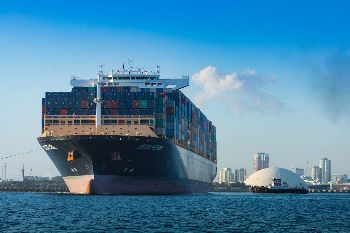California’s ports have been challenged by the outbreak of the coronavirus and the lingering effects of the trade dispute with China according to the port authorities.
The ports of Long Beach and Los Angeles have reported a significant downturn in container volumes during February, while they remain concerned about the next few months.
In particular, terminal operators and dockworkers at the Port of Long Beach (POLB) moved 538,428TEU last month, down 9.8% compared to February 2019. Imports dropped 17.9% to 248,592TEU, while exports increased 19.3% to 125,559TEU. Empty containers sent overseas decreased 12.8% to 164,277TEU.
Long Beach seems to face several difficulties with COVID-19, as a cargo decline in February follows the decision of the Long Beach authorities to cancel JOC TPM Conference 2020, a global container shipping and logistics community event, as a precautionary measure against the virus.

“With the extended factory closures and slowdown of goods movement in China and other Asian countries in February due to Lunar New Year and COVID-19, we are seeing shipping lines needing to cancel some sailings,” said Mario Cordero, POLB executive director. “Once the virus is contained, we may see a surge of cargo, and our terminals, labour and supply chain will be ready to handle it.”
Along with the economic effects of reduced trade the POLB has first confirmed cases of COVID-19 in Long Beach, acording to Long Beach Harbor Commission President Bonnie Lowenthal.
At the same time, the Port of Los Angeles (POLA) handled 544,037TEU in February, a 22.9% decrease compared to last year. Last month’s imports decreased 22.5% to 270,025TEU compared to the previous year, while exports decreased 5.7% to 134,468TEU and empty containers declined 35% to 139,544TEU. POLA has announced that for the first two months of 2020, total container volumes were 1,350,181TEU, down 13% compared to last year.
“We are more interconnected than ever with our global partners so it’s no surprise that transpacific maritime trade has been significantly impacted,” commented POLA executive director Gene Seroka.
“As factory production in China remains at low levels, we expect soft volumes in March. Looking ahead to anticipated manufacturing improvements, we will need to return empty containers to Asia and push lingering US export boxes out swiftly,” Seroka added.
Antonis Karamalegkos
Editor







